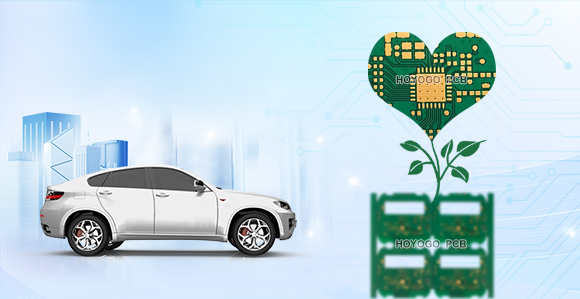What is an Automotive Navigation PCB
With the rapid advancement of smart vehicle technology, automotive navigation systems have become a standard feature in modern vehicles. These systems not only provide precise route planning but also integrate real-time traffic updates, multimedia entertainment, voice control, and other intelligent functions. As the a electronic component of navigation systems, the automotive navigation PCBs connects and supports various electronic components, enabling the signal processing and data transmission required for navigation functions.
Broadly speaking, automotive PCBs are used in a wide range of automotive electronic devices, while automotive navigation PCBs are a high-performance type specifically designed for in-vehicle navigation systems.
Key Functions of an Automotive Navigation PCB
An automotive navigation system is an intelligent information processing device that typically integrates GPS (Global Positioning System), map storage, voice control, real-time traffic information, and more. The automotive navigation PCB plays a crucial role in enabling these functions, including:
1) Signal Processing & Transmission: Receives and processes GPS signals, matching them with map data for precise positioning.
2) Data Storage and Computation: Supports embedded processors and memory to run navigation software and store map data.
3) Multimedia Integration: Enables interaction through in-car audio, Bluetooth, touchscreens, and voice control, enhancing user experience.
4) Wireless Communication: Works with 4G, Wi-Fi, and Bluetooth modules to enable remote updates and real-time traffic information retrieval.
These functions highlight the critical role of automotive navigation PCBs in smart vehicles, making them a key segment within the automotive PCB industry.
Technical Features of an Automotive Navigation PCB
1) HDI PCB Design: To meet the demands of high-density integration, automotive navigation PCBs typically utilize High-Density Interconnect (HDI) technology. This enhances routing density and signal transmission efficiency, making them a core component in the automotive PCB sector.
2) High Temperature and Vibration Resistance: Given the complex operating environments of automotive electronics, automotive navigation PCBs must withstand high temperatures, vibrations, and humidity to ensure stable operation in various driving conditions. While this applies to other automotive PCBs as well, navigation systems have even higher stability requirements.
3) Electromagnetic Compatibility (EMC): Automotive navigation PCBs require optimized designs to minimize electromagnetic interference, enhance signal stability, and ensure GPS accuracy and wireless communication reliability.
4) Material Selection: Typically made with FR-4, high-Tg materials, or ceramic PCBs to enhance heat resistance and electrical performance, ensuring reliability in high-temperature automotive environments.
In smart automotive electronic systems, automotive navigation PCBs, as a crucial category of automotive PCBs, support the efficient operation of navigation systems. They not only involve high-precision signal processing but also integrate multimedia and wireless communication functions. Therefore, optimizing the design and manufacturing processes of automotive navigation PCBs is essential for enhancing the overall experience of smart vehicles.
In the future, with advancements in autonomous driving and vehicle connectivity, automotive PCBs will continue to evolve, and automotive navigation PCBs will witness further innovations and breakthroughs.
HoYoGo is an international, professional and reliable automotive PCB manufacturer, with high levels of automation and dedicated automotive production lines. Our automotive PCBs account for 49% of production. We adhere to strict high-quality standards and hold certifications such as ISO9001, ISO14001, ISO13485, and IATF16949. All products comply with IPC-A-600-H and IPC-6012 acceptance criteria. If you have any PCB-related needs, please feel free to send us an inquiry!

评论
发表评论